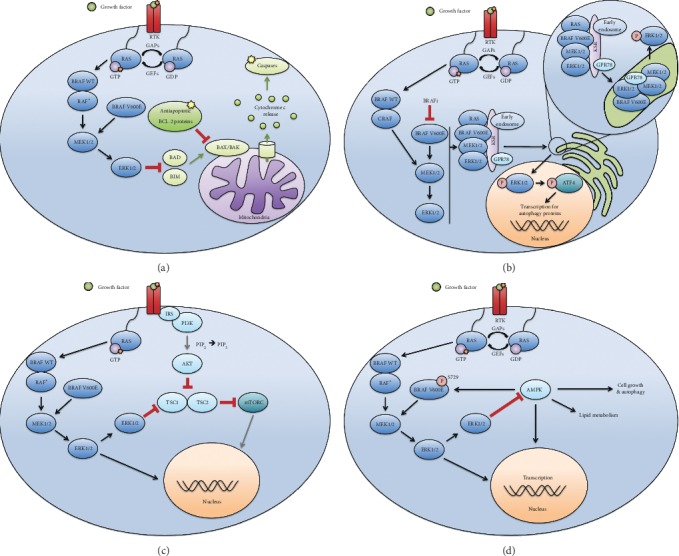Figure 2.

Noncanonical functions of MAPK are emerging targets for BRAFV600E-mutated cancers. (a) MAPK mediates apoptosis by inhibiting BH3-only proteins that activate proapoptotic BAX and BAK proteins. BCL-2 proteins inhibit caspase-mediated apoptosis by sequestering BAX and BAK to prevent release of mitochondrial cytochrome c. (b) MAPK proteins associate with KSR2, GRP78, and endosomes to localize to the ER. Translocation to the ER is required for ERK reactivation, ATF4 phosphorylation, and subsequent autophagy. (c) MAPK negatively regulates PI3K/AKT/mTOR through TSC1 dimers. The Insulin receptor substrate (IRS) recruits PI3K to the membrane resulting in activation and conversion of phosphatidylinositol-4,5-bisphosphate (PIP2) to phosphatidylinositol-3,4, 5-triphosphate (PIP3). The second messenger PIP3 promotes the activation of AKT. AKT inhibits the dimerization and activation of TSC1 and TSC2, leading to mTOR activation. (d) Downstream ERK inhibits the metabolic sensor AMPK, which modulates the MAPK pathway via phosphorylation of serine 729 on BRAF, likely representing a regulatory feedback loop. AMPK promotes catabolism, including lipid breakdown and autophagy.
